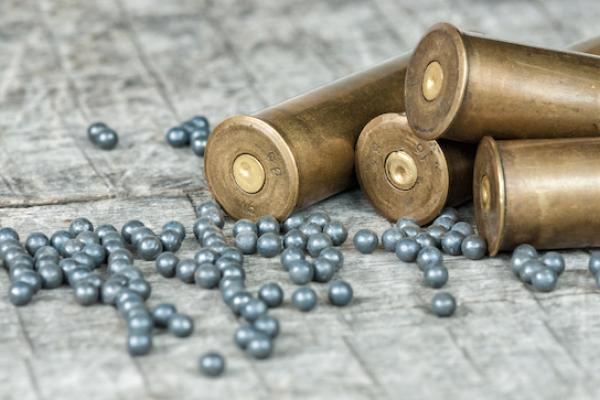Firearms are the lifeblood of organised crime in Europe, as elsewhere in the world. According to the 2021 SOCTA, 60% of the criminal networks active in the EU use violence as part of their criminal businesses. To intimidate and coerce their victims, organised crime groups typically use firearms. Firearms facilitate the trade in illegal drugs and trafficking in human beings. The supply of stolen, smuggled and converted (replica) guns fuels urban gang conflict.
It is estimated that in 2017, 35 million illicit firearms were owned by civilians in the EU (56% of the estimated total of firearms). According to those estimates, illicit firearms would outnumber legally-held firearms in twelve EU countries.
By adopting new legislation and common EU standards, the EU is uniquely placed to help disrupt criminal markets. This is further supported by targeted funding, police and customs cooperation, and engagement with third countries and international organisations.
The life cycle of a weapon begins with its manufacturing. Then it is traded and used, most of the time responsibly and for legitimate purposes such as hunting and sports shooting. At the end of its life, it may be deactivated or completely destroyed. Criminals acquire firearms by exploiting vulnerabilities in this life cycle. They forge documents to enable false transactions, or they convert deactivated or gas and alarm weapons into operational firearms.
Get in touch
If you were unfortunate to have been a victim of gun-related crime, or had an experience with firearms controls, you can contact the Commission’s Firearms Task Force by email: HOME-TASK-FORCE-FIREARMS ec [dot] europa [dot] eu (HOME-TASK-FORCE-FIREARMS[at]ec[dot]europa[dot]eu).
ec [dot] europa [dot] eu (HOME-TASK-FORCE-FIREARMS[at]ec[dot]europa[dot]eu).

More information on the main policy instruments regarding the fight against firearms trafficking

More information on the EU firearms Directive and the EU firearms
EU legislation on firearms
EU laws regulate:
- acquisition and possession of civilian firearms in the single market,
- as well as import and export controls of those weapons.
Firearms Directive
The Firearms Directive (EU) 2021/555 defines minimum common rules on the acquisition and possession of firearms in the EU, as well as on the transfer of firearms from one EU country to another. It balances internal market objectives and security imperatives regarding civilian firearms. The Firearms Directive also strengthens cooperation between EU countries by improving the exchange of information and brings substantial improvements to traceability of firearms by improving the tracking of legally held firearms, to reduce the risk of diversion into illegal markets.
The Firearms Directive imposes restrictions on the circulation of civilian firearms and provides rights and obligations for private persons, dealers, brokers, collectors and museums. In order to avoid unnecessary impediments, there are more flexible rules for hunters and target shooters.
Firearms Regulation
The Firearms Regulation (EU) No 258/2012 lays down rules on exporting, importing and transporting firearms, their parts and components, and ammunition. It implements Article 10, which deals with imports, exports and transit of firearms, of the United Nations Protocol against the Illicit Manufacturing of and Trafficking in Firearms, their Parts and Components and Ammunition. The regulation does not apply to antique or deactivated firearms, or to firearms intended for military or police use.
On 27 October 2022, the Commission presented a proposal for a recast of the Firearms Regulation. The proposal includes new rules to improve the traceability of firearms and the exchange of information between national authorities by harmonising rules across EU countries.
More information on the firearms Directive, its secondary legislation, the firearms Regulation on import and export and the Commissions proposal can be found here.
EU Action Plan on Firearms Trafficking
According to a Eurobarometer survey, most Europeans are worried about the level of crimes using firearms and expect the EU to take action in close collaboration with national governments. The EU has been coordinating activities to counter firearms trafficking for several years, but new threats have emerged that demand new actions.
As part of the Security Union Strategy, on 24 July 2020 the Commission adopted the Action plan on firearms trafficking.
The new action plan is based on the previous two actions plans and focuses on 4 priorities:
- securing the legal framework to reduce risks of diversion of firearms from the legal to the black market
- improving knowledge of the threat, addressing the lack of comparable statistics on firearms events and seizures across the EU
- reinforcing law enforcement to stop the traffickers
- stepping up international cooperation, with a strong set of activities focusing on south-east Europe
Documents
Read more about the action plan here.
Law enforcement cooperation
Europol runs an analysis project titled "Weapons & Explosives". It provides a pool of analysts supporting cross-border investigations, tracing of firearms, and the deployment of a mobile office.
The Council of the European Union prioritizes firearms as part of EMPACT (European Multidisciplinary Platform Against Criminal Threats) and every 4 years a European operational action plan is developed. EMPACT firearms aims to tackle the threats of firearms trafficking in a coherent and methodological way by improving and strengthening cooperation between the relevant services of the Member States, EU institutions and EU agencies, as well as third-party countries and organisations, including the private sector where relevant. This complements the ongoing international cooperation under the Schengen Convention, the Naples II Convention and the Convention on Mutual Assistance in Criminal Matters.
Access to relevant information is paramount. Important instruments for Member States include the Customs Information System (CIS), the Schengen Information System and Interpol’s database on stolen firearms, iARMS.
The European Firearms Experts group provides expertise in the field of illicit trafficking in firearms and produces threat assessments on international firearms trafficking, distribution within Member States, extent of firearms related crime and responses by law enforcement authorities across the EU. Its manual on tracing the ownership of firearms has been adopted by the Council and is helping to standardise procedures for cross-border investigations into seized or recovered crime-related firearms.
Funding
The EU funds projects that contribute to the fight against trafficking in firearms:
- joint initiatives and operational actions between EU countries with non-EU countries
- to improve expertise by enhancing knowledge, detection, investigation and prosecution
- to promote best practices and intelligence along firearms trafficking routes
- to reduce diversion of firearms into criminal hands in the EU
The EU has contributed millions to support disarmament and demobilisation and to disrupt illegal trade in small arms and light weapons in Europe and around the world.
A list of EU-funded projects can be found below.
EU Funded projects
- Project ANITA - Advanced tools for fighting online illegal trafficking
- Project DISRUPT – Disrupting firearms trafficking flows
- Project DIVERT – Diversion of firearms in the EU
- Project ECOFIT – options for enhancing operational instruments in the area of firearms trafficking
- Project EFFECT. Examination of firearms and forensics in Europe and across territories
- Project ESG – European surveillance group on the fight against firearms trafficking in Europe
- Project F3P – Field Forensic Firearms Exploitation
- Project FIRE – fighting illicit firearms trafficking routes and actors at European level
- Project FOCAL-SF – Fight organized crime against light small firearms
- Project INSIGHT – Illegal firearms trafficking and gun violence
- Project ITRACE - reporting mechanism on illicit conventional arms and their ammunition to reduce the risk of their diversion and illicit transfer
- Project REGISYNC - Study on Common Minimum Standards and Effective Practices In Civilian Firearms Registration Systems
- Project SAFTE – Firearms acquisition by terrorist in Europe
- Project TARGET – Targeting gun violence & trafficking in Europe
Documents
- Commission recommendation on immediate steps to improve security of export, import and transit measures for firearms, their parts and essential components and ammunition
- Common position governing control of exports of military technology and equipment
- Council Directive on control of the acquisition and possession of weapons (Firearms directive)
- Deactivation Regulation
- Commission Implementing Directive on technical specifications for the marking of firearms and their essential components
- Commission Implementing Directive on technical specifications for alarm and signal weapons
- Commission Delegated Regulation for the systematic exchange, by electronic means, of information relating to the transfer of firearms within the Union
- Commission Delegated Regulation for the systematic exchange, by electronic means, of information relating to refusals to grant authorisations to acquire or possess certain firearms
- Directive on transfers of defence-related products within the EU
- EU strategy against illicit firearms, small arms & light weapons & their ammunition (PDF)
- 2020-2025 EU Action Plan on firearms trafficking
- Firearms and the internal security of the EU
- Regulation on export authorisation, and import and transit measures for firearms
- Summary of Convention on Mutual Assistance in Criminal Matters
- Summary of Decision on arms trading
- Summary of Directive on weapons
- Summary of Naples II Convention
Related links
- Arms export control (EEAS)
- Conventional weapons (EEAS)
- European Multi-disciplinary Platform Against Criminal Threat (EMPACT)
- Serious and Organised Crime Threat Assessment (SOCTA)
- Illicit firearms trafficking and analysis project on weapons and explosives (EUROPOL)
- Global study on firearms trafficking
- Eurobarometer on firearms
